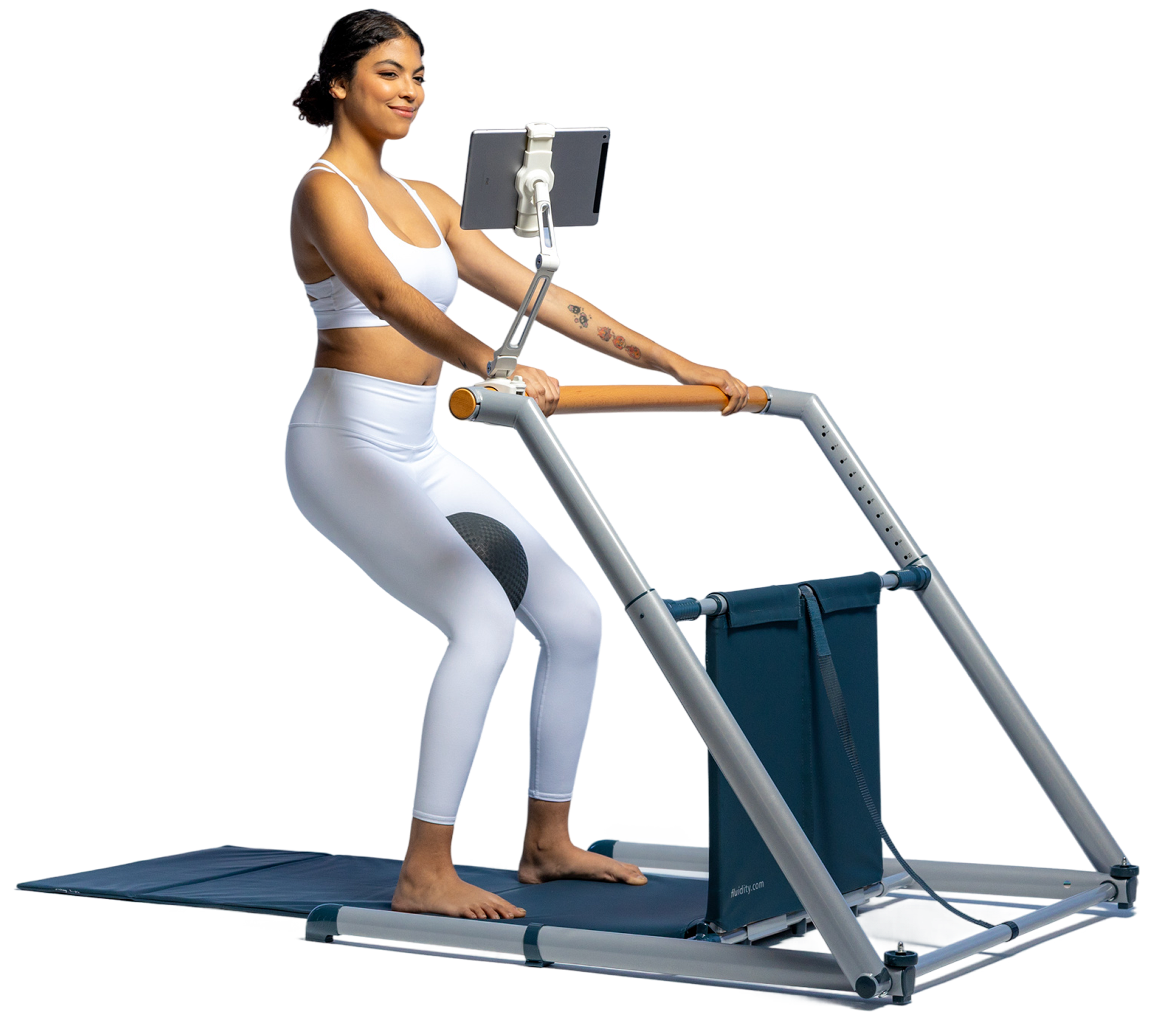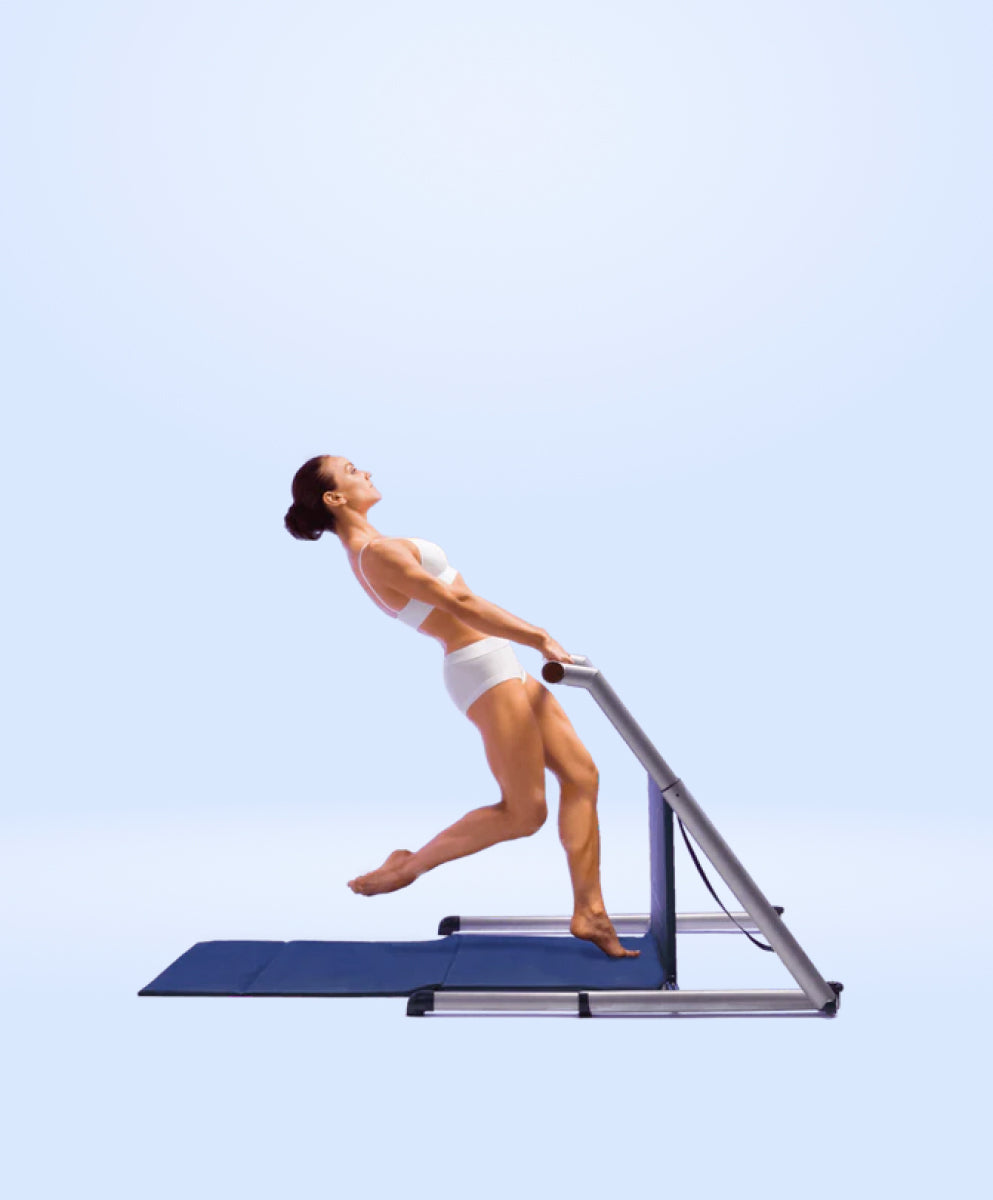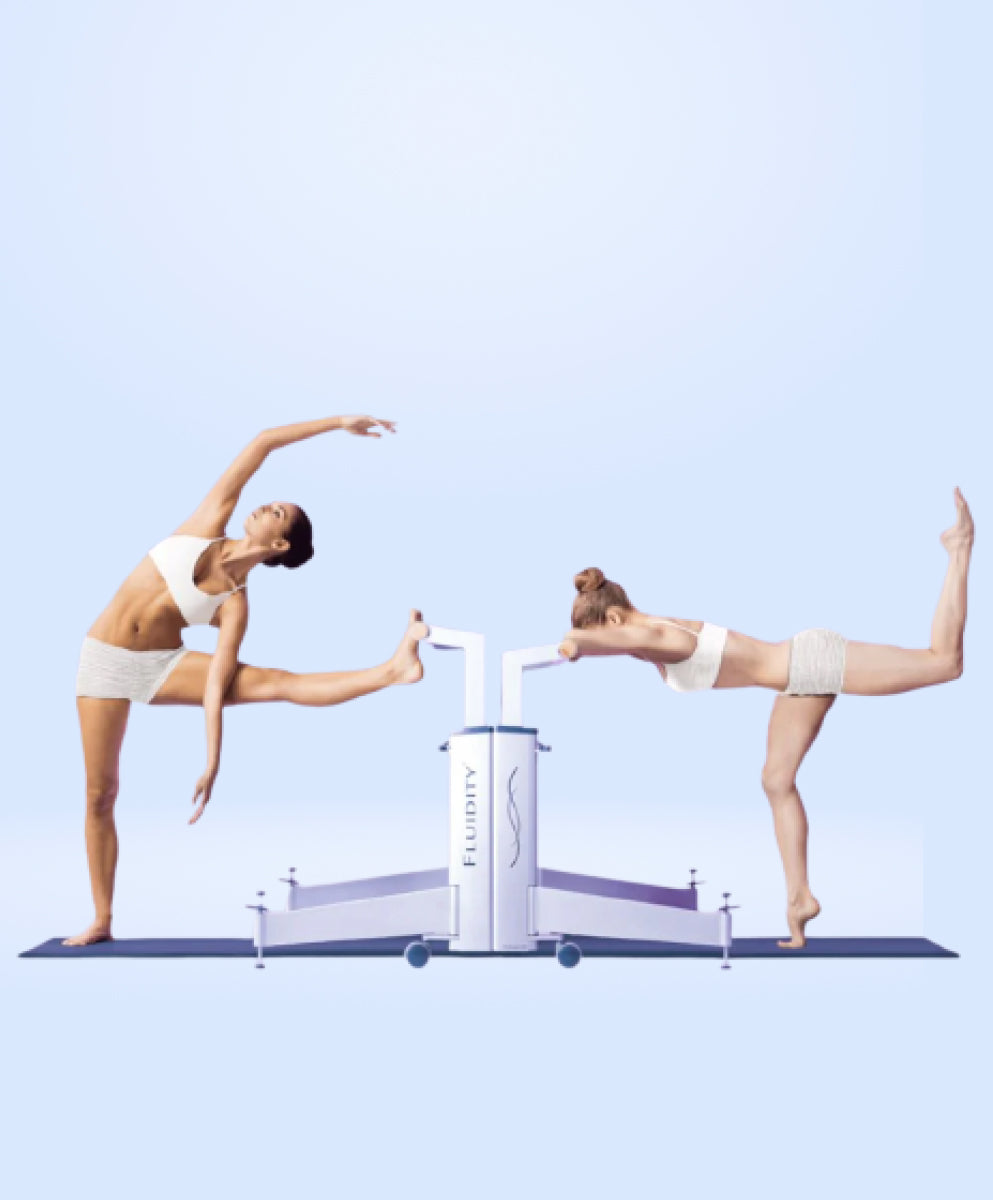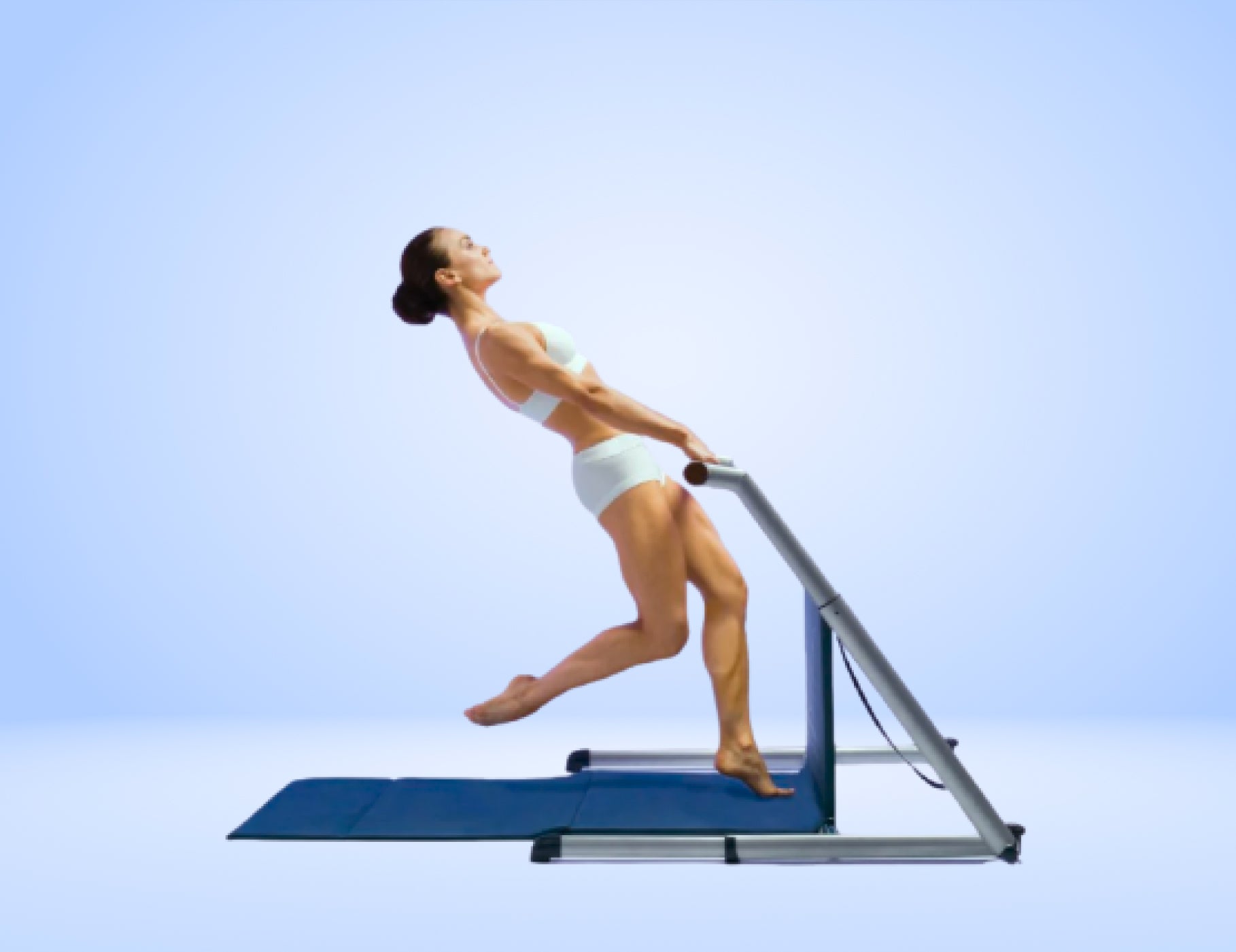How Fluidity Rx helps with Pregnancy, Delivery, and Postpartum Recovery challenges:
Explore Fluidity RxPelvic Girdle Balancing
Fluidity Rx helps with pregnancy, delivery, and recovery by balancing the pelvic girdle (spine, pelvis, and hips) for flexibility, strength, and endurance.
Core Strength
Fluidity Rx develops inner core and abdominal wall strength and endurance, which are key to maintaining functional pain-free movement during pregnancy and postpartum.
Delivery Preparation
Fluidity Rx trains the abdominal and pelvic floor muscles (PFMs) for coordination and relaxation, which helps with reducing resistance during delivery.
Postpartum Recovery
Fluidity Rx strengthens and prepares all of the muscles for rapid return to function in the postpartum period for rapid recovery from pregnancy and childbirth.

Pregnancy, Delivery, and Postpartum Recovery Dysfunctions Supported by Fluidity Rx:
- Core muscle strength deficits.
- Sacroiliac joint pain / Pelvic girdle pain (PGP)
- Pubic symphysis dysfunction (PSD)
- Labor and delivery positions
- Pelvic floor muscle (PFM) recovery issues—episiotomy, perineal tearing
- Abdominal muscle recovery challenges—Diastasis rectus abdominis
- C-section recovery
- Postpartum rib pain
- Strength deficits for childcare
Misaligned Pelvic Tilts Do Not Support Pregnancy, Delivery and Recovery
A misaligned pelvic tilt can disrupt load distribution and muscular balance, compromising fetal positioning, pelvic floor support, and delivery mechanics. Postpartum, it impairs core recovery and may prolong instability, making rehabilitation less effective.
1
2
3
4
Fluidity Rx Trains Users into a Neutral Pelvis
An aligned, neutral pelvis creates optimal load transfer, supports balanced pelvic floor engagement, and allows for efficient fetal positioning and descent. This alignment enhances delivery mechanics and accelerates postpartum recovery by restoring core synergy and structural stability.
Your Core The Inner Unit
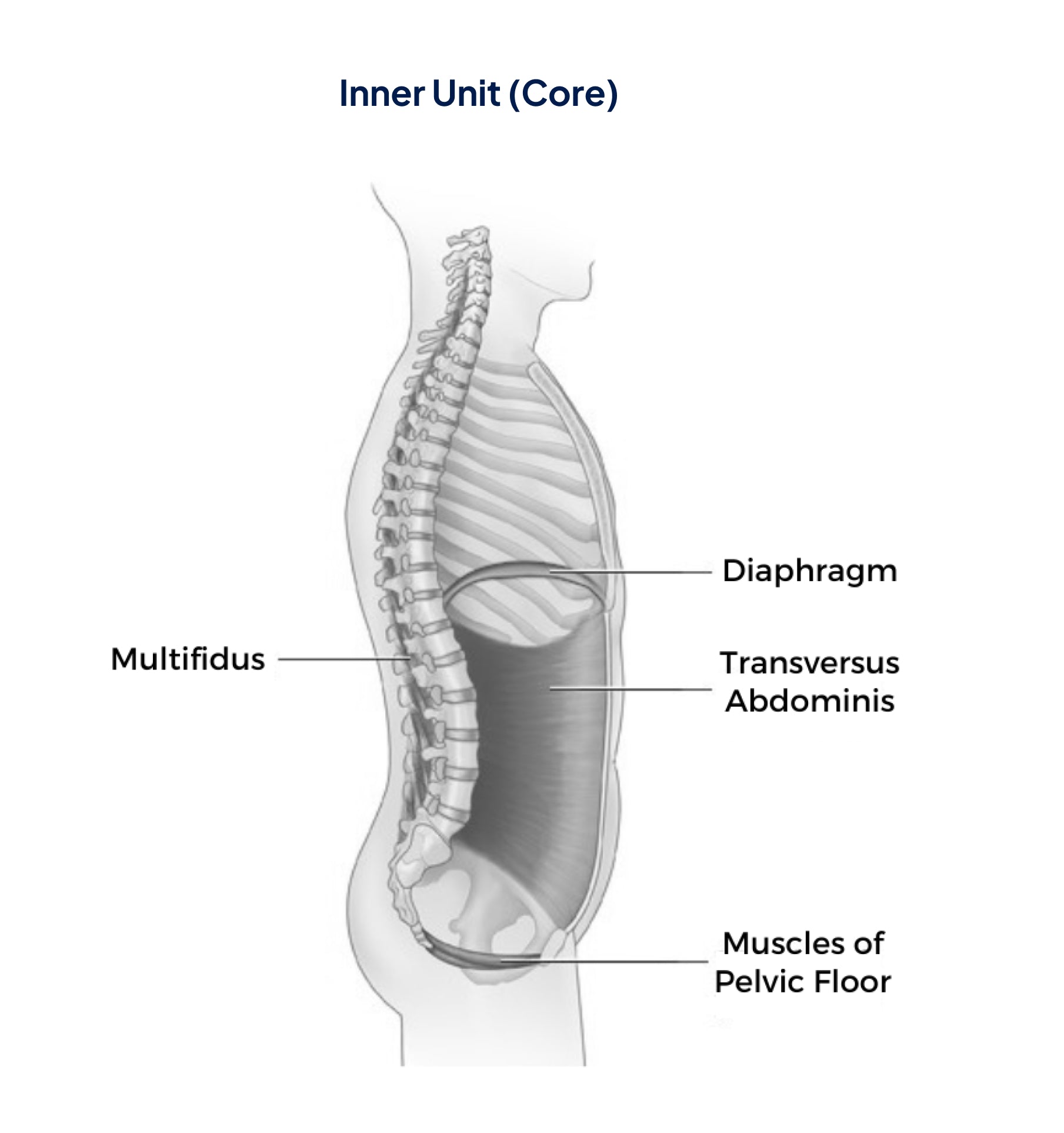
The Inner Unit automatically activates to:
- Control intra-abdominal pressure (the pressure in the abdomen between the lungs and the pelvic floor)
- Stabilize the spine and pelvis before you move your arms and/or legs during movement
When intra-abdominal pressure (IAP) is functioning optimally, It
- Helps Stabilizes the Spine and Core
- Coordinates Breathing and Movement
- Enhances Strength and Ensures Coordinated Force Distribution from the Torso to the Limbs.
- Supports Pelvic Floor and Organ Function.
- Promotes Postural Alignment

“Fluidity Rx provides the optimal method for not only pelvic floor muscle training but also to incorporate the pelvic floor muscles functionally into optimal movement patterns. Fluidity Rx training maximizes a person’s ability to modulate intra-abdominal pressure by the precise training of co-contraction of the pelvic floor with the abdominal, spine, and diaphragm muscles for inner core muscle strength.”
Dr. Cindy Neville
PT, DPT, WCS
Women with Stress Urinary Incontinence are 17 times more likely to heal if they strengthen their pelvic-floor muscles [1]
Women with Stress Urinary Incontinence are 17 times more likely to heal if they strengthen their pelvic-floor muscles [1]
